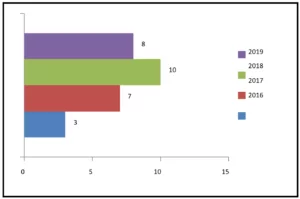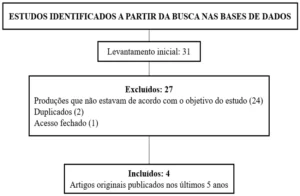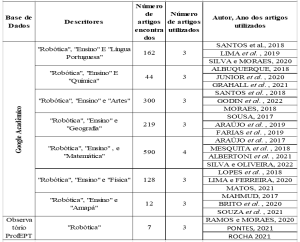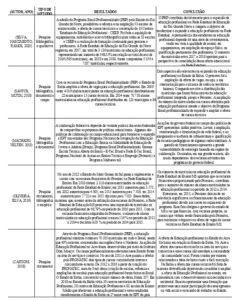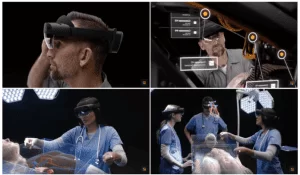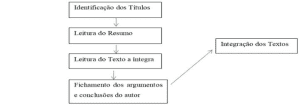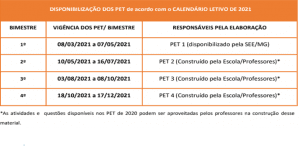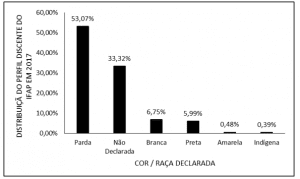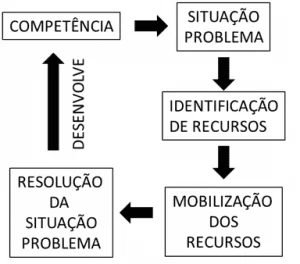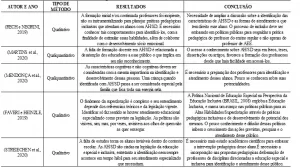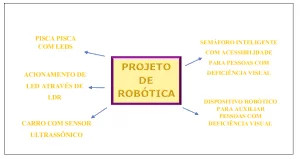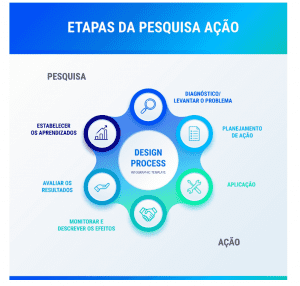ORIGINAL ARTICLE
VIANA, Valderi Nascimento [1], FECURY, Amanda Alves [2], OLIVEIRA, Euzébio de [3], DENDASCK, Carla Viana [4], DIAS, Claudio Alberto Gellis de Mattos [5]
VIANA, Valderi Nascimento. et al. Use of a program to produce an application as an educational product within the Postgraduate Program in Professional and Technological Education (PROFEPT). Revista Científica Multidisciplinar Núcleo do Conhecimento. Year. 07, Ed. 01, Vol. 05, p. 34-46. January 2022. ISSN: 2448-0959, Access link: https://www.nucleodoconhecimento.com.br/education/produce-an-application, DOI: 10.32749/nucleodoconhecimento.com.br/education/produce-an-application
ABSTRACT
The professional master’s objective is that the master’s student, during the course until its conclusion, can locate, recognize, identify and solve problems. To complete the ProfEPT, it is necessary to prepare and deliver an educational product at the end of the course, which is of immediate applicability within the teaching area. Kodular is a website that makes it possible to create applications based on the Android system using blocks as a programming language. The objective of this article was to demonstrate the use of a program to produce an application as an educational product within the Postgraduate Program in Professional and Technological Education (PROFEPT)[6].
Keywords: Application, EPT, Educational Product, Kodular, PROFEPT.
INTRODUCTION
With its first selection process in 2017, ProfEPT made its debut as a postgraduate program in professional and technological education. The ProfEPT is offered through the Federal Institutes in Brazil, and its area of concentration is Teaching, with the characteristic of a professional master’s degree (IFES, 2022).
One of the differences between an academic and professional master’s degree is what results from it. The professional master’s objective is that the master’s student, during the course until its conclusion, can locate, recognize, identify and solve problems. It is to use all the knowledge acquired in research to add value to your professional, social or personal practice (LEITE, 2018).
To complete the ProfEPT, it is necessary to prepare and deliver an educational product at the end of the course, which is of immediate applicability within the teaching area. Along with the educational product, a research report on the process of developing and evaluating the application of the product must be delivered (IFES, 2022).
An educational product is the result of a research process. This product must be the answer to a problem present within professional practice. It can be in real or virtual material format. Educational products should not be considered as ready-made recipes. Teachers who use them can reuse, adapt, combine, share the most diverse products available (RIZZATTI et al., 2020).
Among some possibilities of educational product in the Teaching Area, there are: Social Technology, Didactic Material, Manual/Protocol, Educational Process, Video-Class, Communication Product, Letter, Map or similar, Collection, Organized Event, Training Course professional, Software/Application (RIZZATTI et al., 2020).
Kodular is a website that makes it possible to create applications based on the Android system using blocks as a programming language. Kodular was built around an open source project, MIT App Inventor. MIT App Inventor is still in use, but compared to Kodular the resource limitations are greater (RONALDO and ARDONI, 2020).
The Kodular platform is a great option for building an application as it has a large number of supporting mobile devices available; have an easy-to-use and user-friendly interface; has resources such as: audio, video and image in creation (SYARLISJISWAN and WAHYUNINGSIH, 2021).
OBJECTIVE
Demonstrate the use of a program to produce an application as an educational product within the Postgraduate Program in Professional and Technological Education (PROFEPT).
METHOD
The first step in building an app is by going to the Kodular: Home homepage (https://www.kodular.io/) and clicking Create Apps! (Figure 01)
Figure 1: Home screen
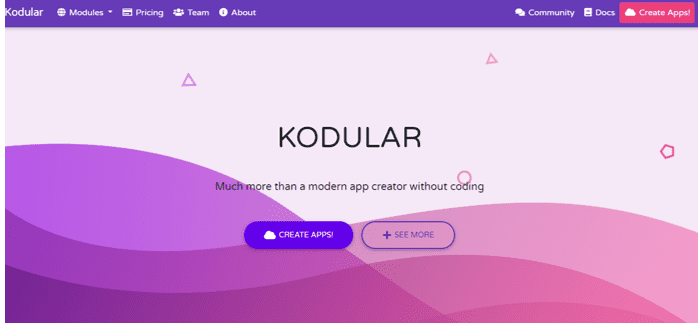
The user will be directed to a login page, when registering, he will be directed to another page where all the projects created by the user are present (Figure 2). To create a new project, click on “Create Project” and then name this new project.
Figure 2: Project storage screen
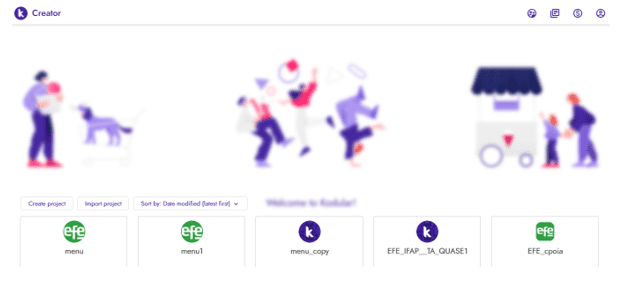
In the initial creation process, you will define the theme, colors, after naming the project, the user will have to choose a base Android system that will be necessary for the app to work (Figure 3).
Figure 3: Choice of base system
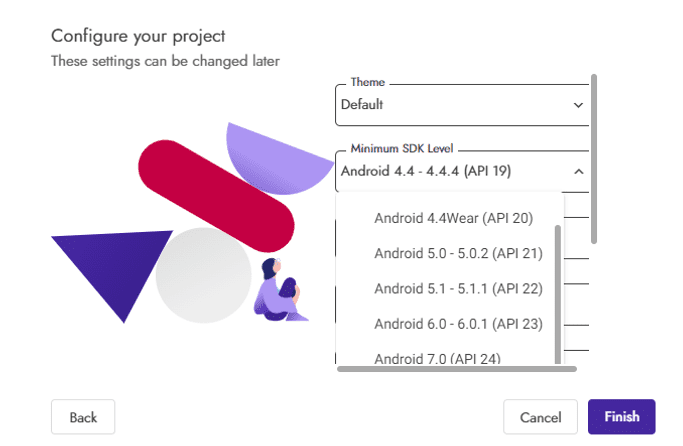
The user is directed to the main window of the platform, where there is an option to choose the cell phone model that will be the parameter for creating the application, being able to choose the screen size (Figure 4).
Figure 4: Main screen
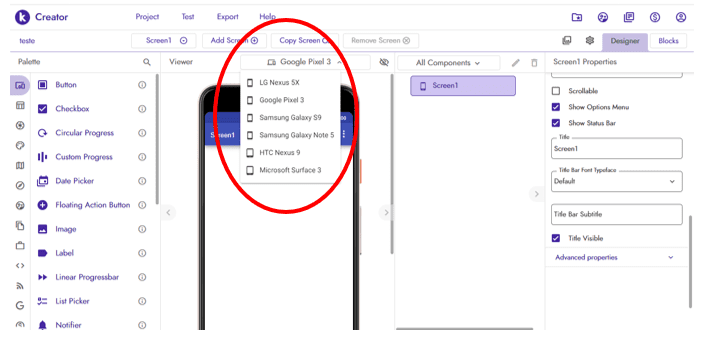
On the left side (Figure 5) there are several buttons. This part of the platform is essential because it is in this space that the user will have access to the tools to be able to start and finish the idealized project. There are main sections such as: Use interface, Layout, Media, Design and Animation, Maps, Sensors, Social, Storage, Utilities, Dynamic Components, Connectivity (Use interface, Layout, Media, Drawing and animation, Maps, Sensors, Social, Storage, Utilities, Dynamic Components, Connectivity). All the basic elements of any application interface such as: box, text, image, buttons, menu, lists can be dragged and arranged on the screen.
Figure 5: Application interface elements
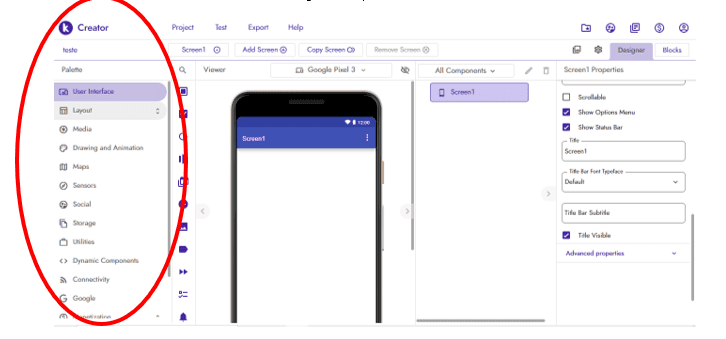
As it has a building block language (Figure 6), to configure the functions it is not necessary to have a mastery of a specific type of programming language. The user will have to join several pieces to form a suitable block to execute the expected command. Each part has its section like: Control, logic, math, text, lists, dictionaries, variables, procedures (Control, Logic, Math, Text, Lists, Dictionaries, Variables, procedures).
Figure 6: Block Settings
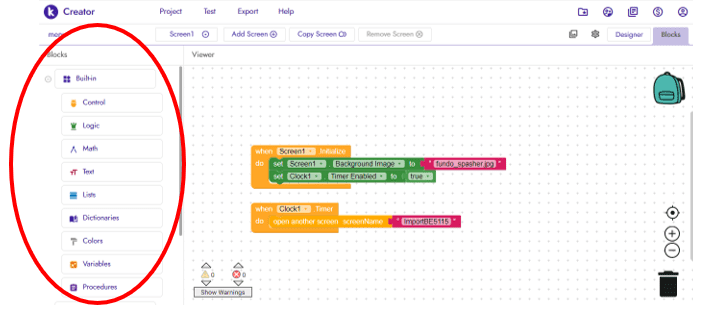
Control: The yellow part is configured for the functional part of the application, for example: close window, close application, open list, ignore result, close a window, open another, etc.
Logic: Green colored piece, uses true logic; false; no; =; ≠; and; or, to configure some application functions.
Math (Mathematics): The blue color part has the function of operating the math part if its use is necessary, it works with the four base operations, numbers, square root, among other characteristics.
Text: Being pink, this piece has the function of working with texts within the application. Being able to divide; hide; obfuscate the textual part of the application, there are other ways to work with text within that part.
List: Having the light blue color as a reference, this piece works with the function of creating lists. Many apps use a data list, whether for a game score, a text list, or a phone list. List creation is used to manipulate sets or elements. It can indicate whether the list is empty; subsist ditto of the list; copy list; among other ways of working with listing.
Dictionaries: With a darker blue, this piece aims to store information in an easily accessible and organized way, it is formed by a key and a value.
Colors: In gray, this part will be used to work with and manipulate the application’s colors, the color of a page; text box color; split colors.
Variables: Colored orange, this piece is like a connector for information that will be stored while the application is running. Being able to retrieve and reuse this information throughout the application.
Procedures: The purple part has the function of working with a sequence of blocks or code stored under a name, that is, the procedure block will have a name. “Instead of continuing to put together the same long sequence of blocks, you can create a procedure and just call the procedure block whenever you want your sequence of blocks to execute” (KODULAR, 2021).
After each change made to the structure of the blocks, the functionality test can be carried out (Figure 7). For this, there is an option for “Connect of companion” and “Connect via USB” where it is possible to test the application.
Figure 7: Application testing
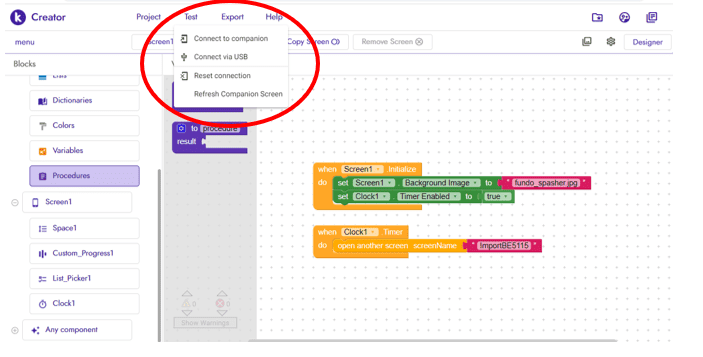
To finish creating the app, go to Export and select Android App to generate the APK, if the user is interested in posting the app on the Google store, save it in the Android App Bundler (Figure 8). Since for the post both files will be needed.
Figure 8: Ending the application

RESULTS AND DISCUSSION
According to Google Play data, in Figure 9, of the 145 visits to the store, 73 people downloaded the EFE app, an educational product produced on PROFEPT IFAP and produced with Kodular, between April 12, 2021 to January 18, 2022 . Shows that almost half of the visitors acquired the application.
Figure 9: Shows the number of visitors and installations of the EFE application
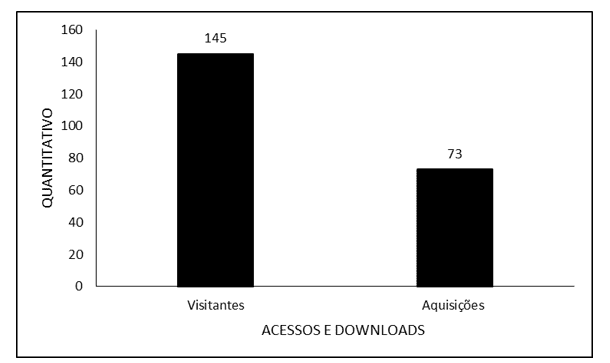
In geographic scope, the educational product managed between April 12, 2021 and January 18, 2022 to receive downloads from three countries, in Brazil with 70, Portugal with 2 and in Japan with 1 download performed (figure 10), showing an ease of dissemination and access to content created during the master’s degree.
Figure 10: Shows the number of downloads performed by country
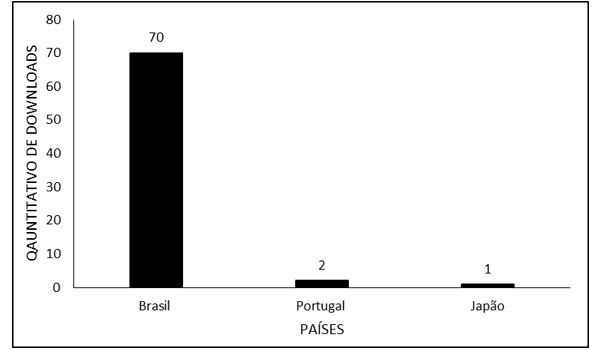
Overall, for those who need to build an application for free and simply, the Kodular platform is a great option, among other platforms available on the internet such as: Adalo; AppInventor; Bubble; Thunkable. Kodular is more complete in its tools and creation possibilities (FINKLER et al., 2021).
The use of the Kodular platform, because it is complete, allows the realization of several ideas in a didactic and interactive way. Also, because it is a tool that is available online, it can be used anywhere and on any device that has internet access. In addition to creating an educational application (VIANA et al., 2021), there are other differentiated works such as the application to prevent injuries through ergonomic activities (PEREIRA et al., 2021); to assist speech therapists in carrying out the exam (VALENTE, 2019); to encourage the separation and correct destination of household waste (MELO et al., 2020).
CONCLUSIONS
The Kodular app seems to be efficient and practical in producing an educational product. This makes it possible for graduate students in education and teaching to effectively disseminate the results of their PROFEPT master’s dissertations.
Thus, showing the potential that the tool has for the creation of countless and more diverse applications, all depending on the creativity of the author of the project.
REFERENCES
FINKLER, G. H. et al. Estudo de sistemas de desenvolvimento de mobile apps para ensino de programação na rede básica de ensino. Salão do Conhecimento, v. 7, n. 7, p. 1-5, 2021.
IFES. Regulamento: ProfEPT. Vitória ES, 2022. Disponível em: < https://profept.ifes.edu.br/regulamentoprofept/16413-regulamento13julho >. Acesso em: 18 jan. 2022.
LEITE, P. D. S. C. Materialismo Histórico-Dialético e suas relações com a pesquisa participante: contribuições para pesquisas em Mestrados Profissionais. Revista Anhanguera, v. 18, n. 1, p. 52–73, 2018.
MELO, N. A. D.; KOHLER, T. F.; VENERA, E. Reciclabq: coleta seletiva e conscientização ambiental através da integração entre ensino, pesquisa e extensão. Anais da Semana de Formação Acadêmica e Científica e Cultural e Humanística e…(FACCHU), v. 1, n. 1, p. 1-7, 2020.
PEREIRA, J. V. C.; MOURA, R. A.; SILVA, M. B. Aplicativo para android visando prevenir lesões musculoesqueléticas em ambientes de convívio do cotidiano humano como ferramenta de gestão. CIMATech, v. 1, n. 8, p. 80-89, 2021.
RIZZATTI, I. M. et al. Os produtos e processos educacionais dos programas de pós-graduação profissionais: proposições de um grupo de colaboradores. ACTIO, v. 5, n. 2, p. 1-17, 2020.
RONALDO, R.; ARDONI, A. Pembuatan Aplikasi Mobile” Wonderful of Minangkabau” sebagai Gudang Informasi Pariwisata di Sumatera Barat Melalui Website Kodular. Info Bibliotheca: Jurnal Perpustakaan dan Ilmu Informasi, v. 2, n. 1, p. 88-93, 2020.
SYARLISJISWAN, M. R.; WAHYUNINGSIH, S. D. The development of e-modules using Kodular software with problem-based learning models in momentum and impulse material. Journal of Physics: Conference Series, v. 1796, p. 1-13, 2021.
VALENTE, V. L. S. Proposta de desenvolvimento e implementação de ferramenta mobile para realização de exame fonético fonológico. 2019. 62p. (Graduação). Universidade Federal do Pará, Castanhal PA.
VIANA, V. N. et al. Manual de práticas em Educação Física na Educação Profissional e Tecnológica Utilizando o Aplicativo Gratuito EFE – EPTFis. Revista Científica Multidisciplinar Núcleo do Conhecimento, v. 5, p. 65-76, 2021. Disponível em: < https://www.nucleodoconhecimento.com.br/educacao-fisica/manual-de-praticas >.
APPENDIX – FOOTNOTE
6. Programa de Pós-Graduação em Educação Profissional e Tecnológica (PROFEPT).
[1] Physical Educator, Specialist in Exercise Physiology and Sports Nutrition (FAMA), Master in Professional and Technological Education (PROFEPT IFAP).
[2] Biomedical, Doctor in Tropical Diseases, Professor and researcher at the Macapá Campus Medicine Course, Universidade Federal do Amapá (UNIFAP).
[3] Biologist, Doctor in Tropical Diseases, Professor and researcher at the Physical Education Course at the Universidade Federal do Pará (UFPA).
[4] PhD in Psychology and Clinical Psychoanalysis. PhD in progress in Communication and Semiotics from the Pontifícia Universidade Católica de São Paulo (PUC/SP). Masters in Religious Sciences from Universidade Presbiteriana Mackenzie. Master in Clinical Psychoanalysis. Degree in Biological Sciences. Degree in Theology. He has been working for over 15 years with Scientific Methodology (Research Method) in the Scientific Production Orientation of Masters and Doctoral Students. Specialist in Market Research and Health Research. ORCID: 0000-0003-2952-4337.
[5] Biologist, PhD in Behavioral Theory and Research, Professor and researcher at the Degree in Chemistry at the Basic, Instituto de Ensino Básico, Técnico e Tecnológico do Amapá (IFAP) and at the Programa de Pós Graduação em Educação Profissional e Tecnológica (PROFEPT IFAP).
Sent: July, 2021.
Approved: January, 2022.

